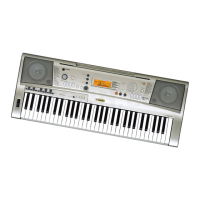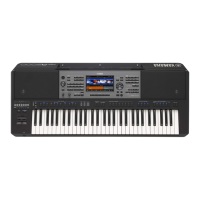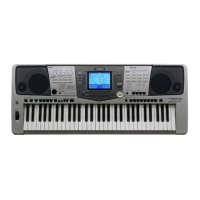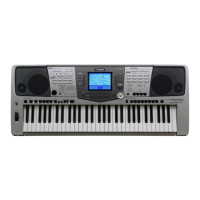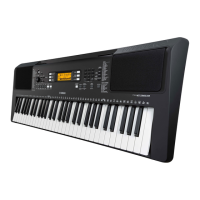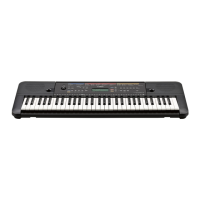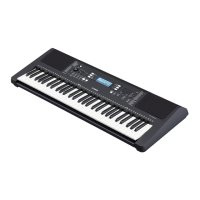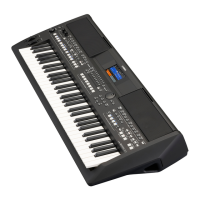144 PSR-A3000 Owner’s Manual
Pressing the [8 ] (SET UP) button calls up the detailed setting display. You can set
the view type by using the [1 ]–[6 ] buttons, then press the [8 ] (OK) button.
[7 ] SIZE Determines the display zoom level of the notation.
[8 ] SET UP Calls up the detailed setting display. See below.
[1 ] LEFT CH Determines which MIDI channel in the Song data is used for the left-hand/
right-hand part. This setting returns to AUTO when a different Song is
selected.
AUTO: The MIDI channels in the Song data for the right- and left-hand
parts are assigned automatically—setting the parts to the same channel
as the channel which is specified in the [FUNCTION] TAB [E]
MENU 1 [H] SONG SETTING TA B [E] GUIDE/CHANNEL
(page 147).
1–16: Assigns the specified MIDI channel (1–16) to each of the left- and
right-hand parts.
OFF (Available setting only for LEFT CH): Assigns no channel to the
left-hand part. This disables display of the left-hand key range.
[2 ] RIGHT CH
[3 ]/
[4 ]
KEY
SIGNATURE
This lets you enter key signature changes in the middle of a Song, at the
stopped position. This menu is useful when the selected Song contains no
key signature settings for displaying notation.
[5 ] QUANTIZE This gives you control over the note resolution in the notation, letting you
shift or correct the timing of all displayed notes so that they line up to a par-
ticular note value. Make sure to select the smallest note value used in the
Song.
[6 ] NOTE NAME Selects the type of the note name indicated at the left of the note in the nota-
tion from among the following three types. The settings here are available
when the NOTE ON/OFF parameter above is set to ON.
A, B, C: Note names are indicated as letters (C, D, E, F, G, A, B).
Fixed DO: Note names are indicated in solfeggio, with the note of C fixed
to DO. The notes “C, D, E, F, G, A, B” are always indicated as “Do, Re,
Mi, Fa, So, La, Ti” when the language is set to English. Note that the
note name indication differs depending on the current language
(page 148).
Movable DO: Note names are indicated in solfeggio according to the key
of the current Song. When a Song in the key of D Major is selected, for
example, the notes “D, E, F#, G, A, B, C#” are indicated as “Do, Re,
Mi, Fa, Sol, La, Ti” when the language is set to English. Note that the
note name indication differs depending on the current language
(page 148).
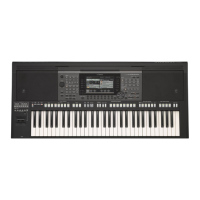
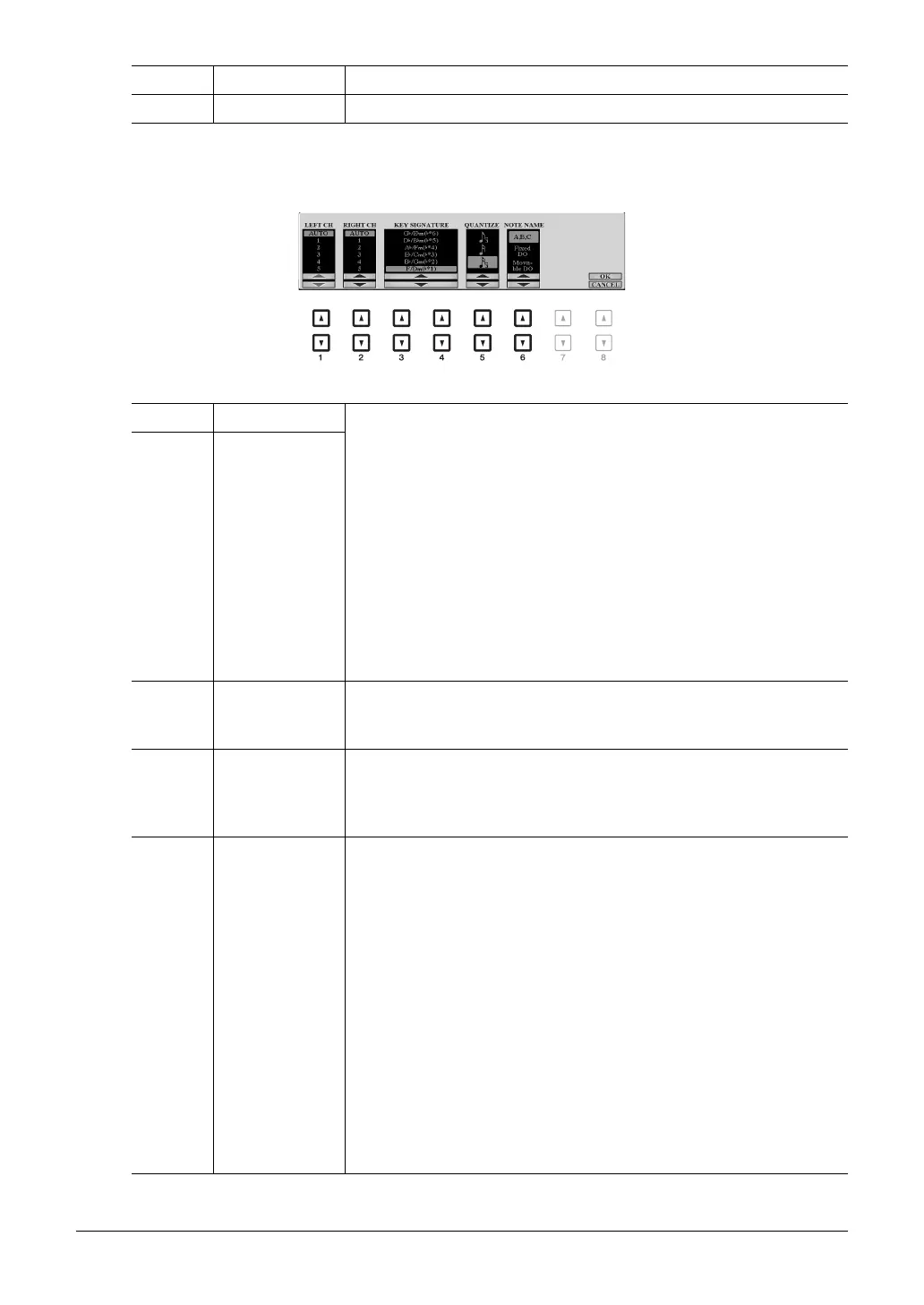